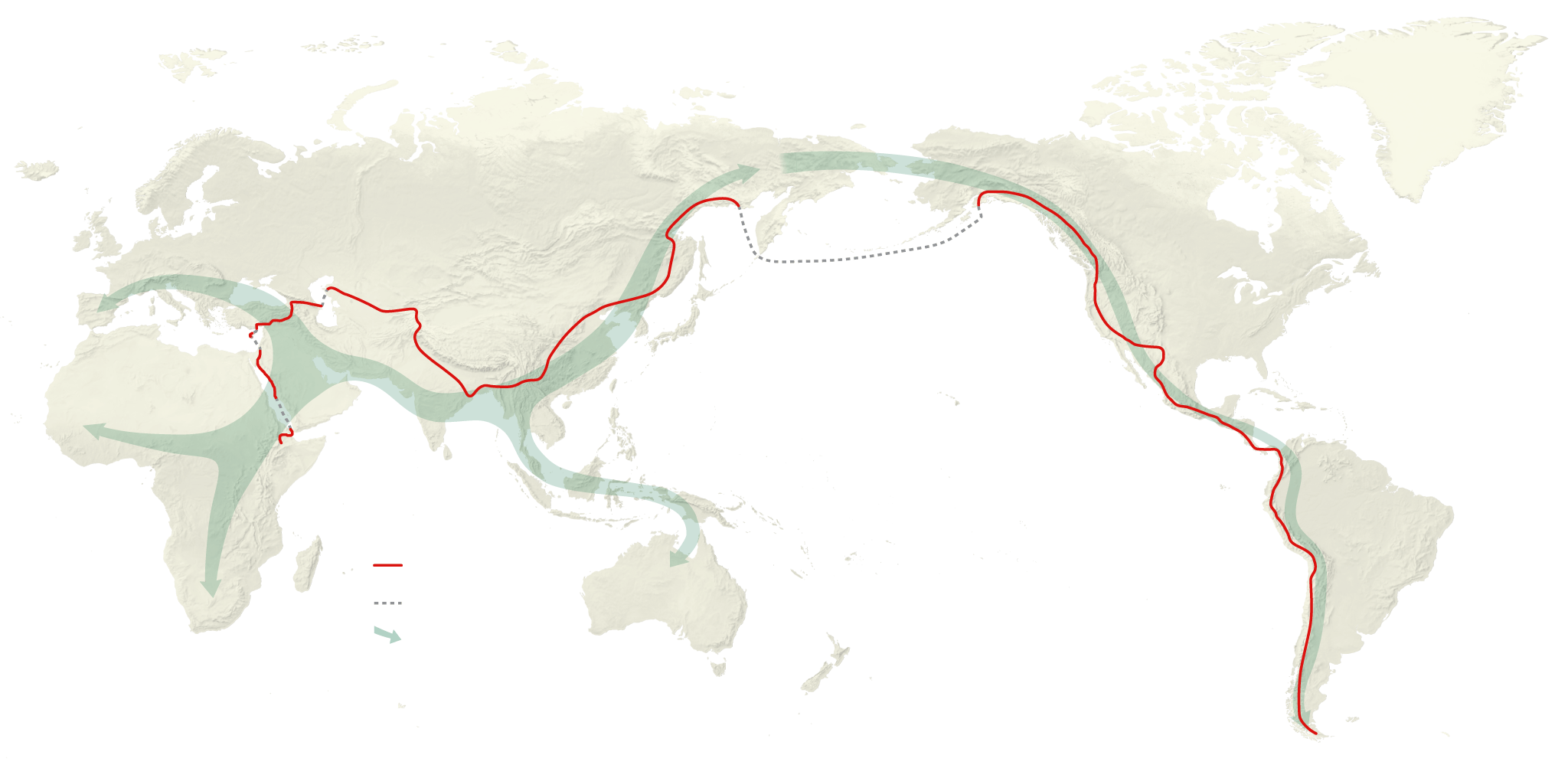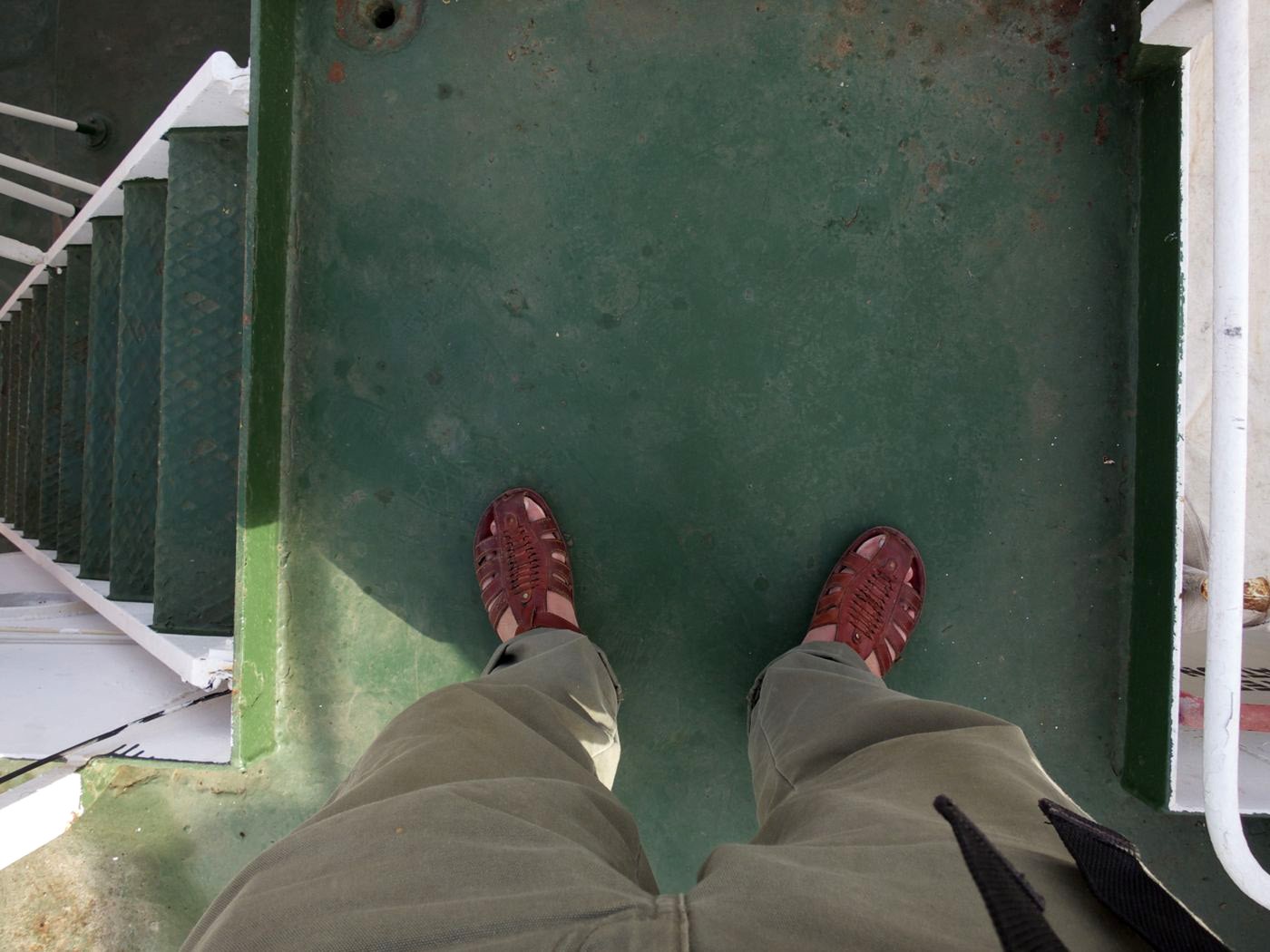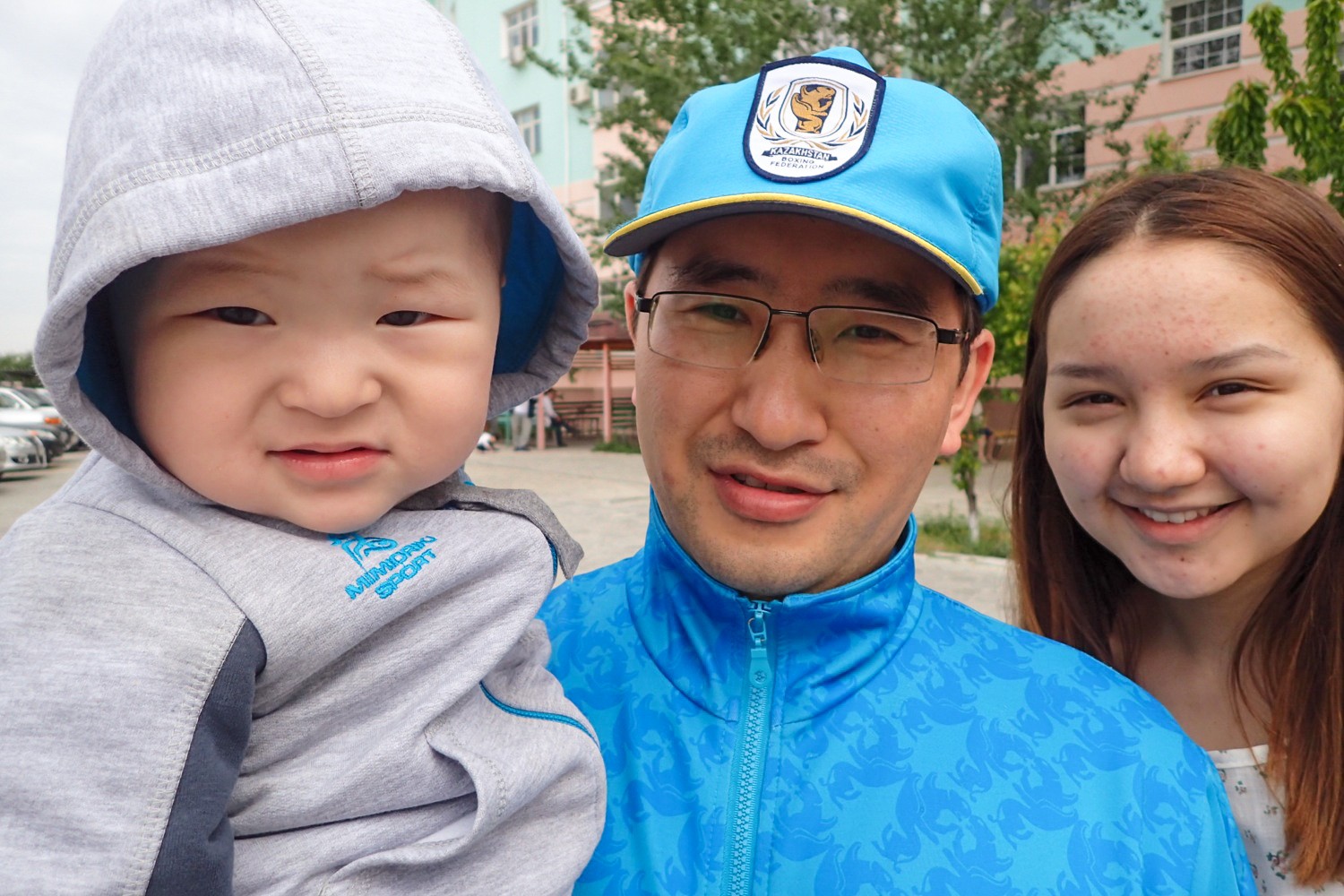The Out of Eden Walk Website is Linked Here.
Paul Salopek in 2013 started a fascinating journey which he is still on. His goal, retrace the path of human migration from the heart of Africa to the tip of South America while visiting the people who currently live in those locations. Throughout his journey he creates milestones which showcase the geography, people, and partially the culture of that location. This blog post is dedicated to discussing three of these milestones.

Milestone 7: Red Sea

The first location was not any town or village on land, but a boat. Its journey was on the Red Sea, which is a large body of water with no land to be seen anywhere. The MV Abuyasser is a cargo ship that has green metal decks filled with barrels and tarps covering most of the rear of the ship. On the side of the vessel were canes with red canoe-like lifeboats. Its journey was on the Red Sea, which is a large body of water with no land to be seen anywhere. Its crew was multi-cultural, with Somali, Palestinian, Egyptian, Yemeni, and Djiboutian deck hands. The captains and cook however were Syrian. The cook Yusef Amon views working on the ship as simply a job and is looking forward to going back home in two weeks’ time. Working on a cargo ship seems like a thankless job with limited stimulation and a lot of free time. The most interesting dynamic of this location is that all deck hands must eat Syrian food, which includes hummus, olives, goat cheese, and boiled eggs.
Milestone 17: Wadi Rum

The next location was a small village named Wadi Rum in Southern Jordan. Built in a breathtaking valley surrounded by red spire rock formations, the rocky red sand is not conductive to growing food. Instead, a village was developed by foreigners who built schools and cinder block houses for the people to live in. Rather than being pastoral, like other Bedouin tribes, the people of Wadi Rum live a more domesticated style of living. This can be seen with a ten-year-old girl named Deena Mohammad. Deena has curly long black hair held together by a pink hairband. Here sole focus is going to the local school in one of the yellow buildings in the village. I did not know that some previously pastor groups ceased being pastoral to adopt this lifestyle.
Milestone 35: Brink

The final location is a city located along the Caspian Sea called Aktau, Kazakhstan. As it is a city, most of the streets are paved with asphalt with planted tall trees lining the streets. One of the most striking features was the gated parking lot for one of the apartment buildings. It had black metal bars that were held together by stone painted pink. The surface was paved with circular gray tiles. As for the local people, Abad Urisbayev Kamila Zhangirkhan as mentioned above were interviews. Abad is a local councilman who loves his country, as seen through his Kazakhstan Boxing Federation cap and his track suit matching the colors of the Kazakhstan flag. As for his sister Kamila, she simply is focusing on graduating high school and going to the big city of Almaty to learn finance at college. Compared to the other locations, this feels familiar to my area in New Jersey.
In closing, I found the Out of Eden Walk a very enjoyable experience. Being able to see the landscapes and local people of areas that I have never even heard of before is a great tool in showing other cultures. The only thing more interactive might be a live Skype call with somebody who lives or works in these locations.
Thank you for reading this blog. For more, checkout my twitter @FallerAustin!